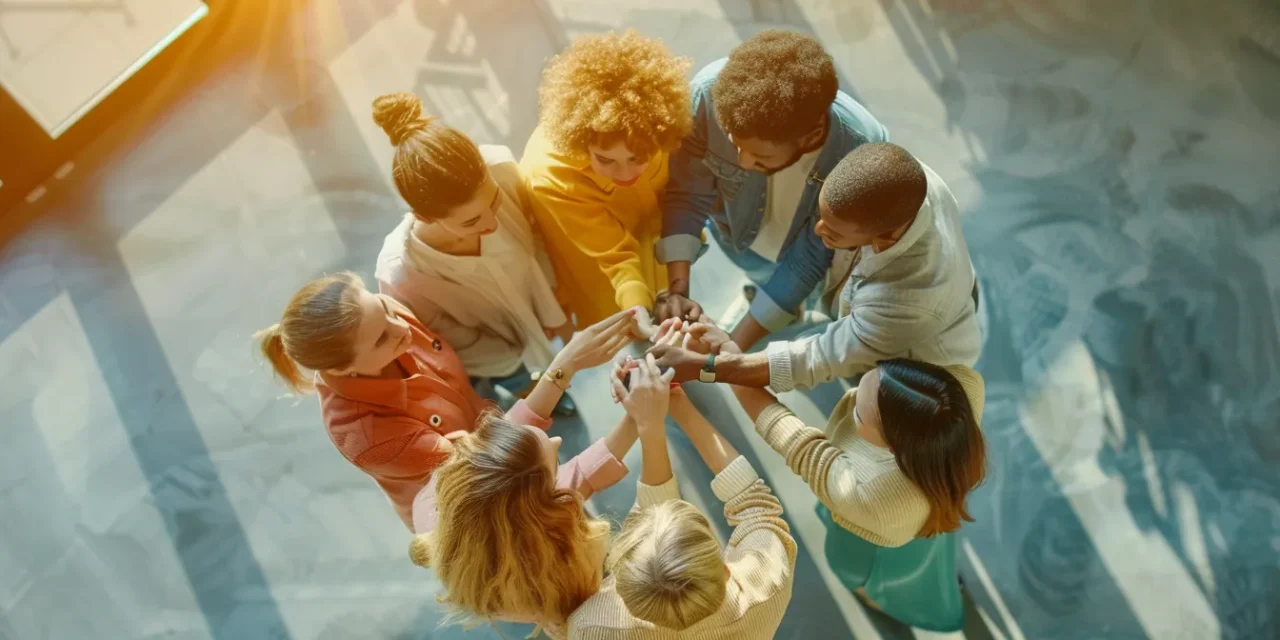Table Of Contents:
- Collaborative Exercise: Enhancing Team Synergy
- Key Takeaways
- Defining the Core of Collaborative Exercise in Teams
- Understanding the Concept of Collaborative Exercise
- The Link Between Collaborative Exercise and Team Synergy
- Essential Elements of a Successful Collaborative Exercise
- Clear Communication Channels
- Defined Roles and Responsibilities
- Mutual Trust Among Team Members
- An Emphasis on Collective Goals
- Top Collaborative Exercises to Boost Team Synergy
- The Marshmallow Challenge: Building Together
- Two Truths and a Lie: A Personal Connection Exercise
- The Minefield: Trust and Communication
- Role Reversal Exercise: Understanding Different Perspectives
- Measuring the Impact of Collaborative Exercises on Team Performance
- Setting Baselines for Team Performance
- Regular Feedback Loops
- Performance Metrics Pre and Post Exercise
- Overcoming Challenges in Collaborative Exercises
- Addressing Resistance to Participation
- Handling Conflicts During Exercises
- Balancing Different Personalities and Skills
- Implementing Collaborative Exercises in Remote Teams
- Virtual Team-Building Activities
- Leveraging Technology for Collaboration
- Adjusting Collaborative Exercises for the Virtual Environment
Collaborative Exercise: Enhancing Team Synergy
In a team setting, the age-old phrase “Don’t put all your eggs in one basket” applies perfectly to the distribution of tasks and creativity among members. When a marketing department, for instance, harnesses collaborative exercise, the collective creativity soars, thereby optimizing outcomes. By introducing cooperative challenges, teams can catalyze synergy, weaving individual strengths into a formidable tapestry that stands up to any corporate hurdle. This synergy is not just about working alongside each other, but about each person contributing a unique strand of genius to the collective effort. Keep reading to discover how to craft and implement collaborative exercises that can transform your team into a dynamo of innovation and productivity.
Key Takeaways
- Collaborative exercises enhance team synergy and individual growth
- Defining roles and clear communication are pivotal for effective team dynamics
- Regular feedback loops refine team collaborative efforts
- Digital tools facilitate remote team-building activities
- Adapting exercises for virtual engagement maintains team cohesion
Defining the Core of Collaborative Exercise in Teams

Embarking upon the journey of collaborative exercise within a team, I find it paramount to unpack the concept’s intricate layers. For me, collaborative exercise is an icebreaker that transcends mere physical activity. It hinges on the collective engagement where leadership and peer interaction merge, crafting a dynamic experience integral to an organization‘s spirit. By interlacing the fibers of collaborative exercise with robust collaboration tools, teams can amplify their synergy, fostering an environment ripe for both individual and group triumphs. This symbiotic relationship illustrates the profound impact structured team-based activities can have on the overarching cohesion and efficacy of a group.
Understanding the Concept of Collaborative Exercise
The essence of collaborative exercise nestles within the understanding that it’s not just a physical space for team members to engage in fitness routines; it’s also an arena where the ‘scavenger hunt’ of discovering each other’s strengths unfolds. The shared language of goals and achievements, akin to deciphering a complex piece of reading, becomes clearer, propelling collective growth in a workplace setting. This dynamic not only fortifies muscles but also the fabric of the team itself.
| Aspect | Role in Collaborative Exercise |
|---|---|
| Space | Facilitates physical and social interaction |
| Scavenger | Encourages exploration of team dynamics |
| Language | Unites team with common goals and vocabulary |
| Reading | Helps understand and interpret team’s progress |
| Workplace | Becomes a crucible for strengthening teamwork |
| Element | Role in The Minefield |
| Blindfold | Builds trust in partner’s guidance and knowledge |
| Obstacles | Simulates workplace challenges for conflict resolution practice |
| Communication | Enables clear guidance and impactful feedback |
| Collaborative Exercise | Fosters group coordination and collective problem-solving |
| Escape Room Vibes | Emphasizes teamwork under pressure and the value of diverse perspectives |
Role Reversal Exercise: Understanding Different Perspectives
In my practice of fostering robust employee engagement, I’ve integrated the Role Reversal Exercise, recognizing its potency in honing empathy and collaboration within the confines of a company. By stepping into the shoes of their colleagues, human connections are deepened, enabling a fuller grasp of the multifaceted challenges and insights of different roles. This strategic swap of responsibilities not only aligns with our collective goal of nurturing a more cohesive work culture but also enhances the breadth of shared understanding and teamwork.
Mastering collaborative exercises can dramatically uplift team synergy. Now, let’s examine how to effectively measure their impact on overall team performance.
Measuring the Impact of Collaborative Exercises on Team Performance

In the pursuit of diligently engineering a cohesive team environment, the application of collaborative exercises stands as a pivotal strategy within the sphere of collaborative work. As I look to ascertain the efficacy of these exercises, the establishment of baselines for team performance is instrumental. This method sets a foundation that ensures the subsequent incorporation of regular feedback loops is fruitful, feeding into the development and refinement of performance metrics that are assessed both pre and post exercise. Such robust evaluation tactics are critical for discerning the tangible benefits that collaborative exercises contribute to the functioning of any high-performing team.
Setting Baselines for Team Performance
As I initiate the process of embedding collaborative exercise into a team‘s routine, it’s vital to first establish clear baselines for performance. This involves evaluating current communication patterns, problem-solving abilities, and team output prior to introducing the new dynamics that collaborative exercises will bring. By creating a detailed snapshot of the team‘s pre-exercise function, I can accurately track improvement and tailor ongoing strategies to build an ever more synergistic and effective team unit.
Regular Feedback Loops
As I hone the collaborative fitness routine of a team, the establishment of regular feedback loops has proven indispensable. Through consistent collection and analysis of team members’ impressions and performance data after each exercise session, I refine the activities to better meet the group’s objectives. This practice is much like fine-tuning an instrument, essential for ensuring that every note of effort resonates perfectly with the symphony of our teamwork goals.
Performance Metrics Pre and Post Exercise
Assessing team performance both before and after the implementation of collaborative exercises permits a granular view of growth and areas for further development: It’s akin to plotting a course on a map, where the starting point is marked and each key landmark indicates progress on the journey to enhanced team synergy.
- Tracking changes in team productivity and efficiency
- Measuring improvements in team communication and conflict resolution skills
- Evaluating shifts in team morale and overall job satisfaction
- Observing the enhancement of creative collaboration and idea generation
Transitioning from measuring collaborative exercise outcomes to overcoming challenges requires a shift in focus. Let’s pivot to address the barriers teams face and the strategies to conquer them.
Overcoming Challenges in Collaborative Exercises

As someone who frequently facilitates team-building through collaborative exercises, I’m well-versed in the myriad of challenges that can arise during these activities. Resistance to participation often emerges as a hurdle, with some members showing reluctance to step out of their comfort zones or embrace unfamiliar team dynamics. Then there’s the concern of managing conflicts that may surface as individuals work closely together, which requires a deft touch to mediate and guide towards constructive outcomes. Equally crucial is the skill to balance the diverse mix of personalities and skill sets within the team, ensuring every member feels valued and engaged. Choosing the right strategies to navigate these issues is key to unlocking the full potential of collaborative exercises in strengthening team synergy.
Addressing Resistance to Participation
In my role as a facilitator of collaborative fitness, I’ve learned to gently steer resistant team members towards the benefits of participation by clearly articulating the value that each exercise brings to both their personal growth and the team’s success. Demonstrating empathy and patience, I ensure everyone feels heard and included, leading to increased willingness to engage and, ultimately, a more unified and effective team effort.
Handling Conflicts During Exercises
In my experience with team building through physical endeavors, I’ve realized that addressing conflicts head-on as they arise during exercises is crucial. My approach includes creating a supportive atmosphere where open dialogue is encouraged, ensuring every team member has the opportunity to voice concerns and contribute to solutions. This proactive stance allows the team to navigate tensions effectively, maintaining the cohesion necessary for the success of our collaborative exercises and the overall harmony of our group dynamics.
Balancing Different Personalities and Skills
Acknowledging the spectrum of personalities and skill sets within a team plays a critical role in the realm of collaborative exercise. An essential aspect of my facilitation strategy involves recognizing and valoring the unique contributions that each individual brings to the table: from the creative visionaries and analytical thinkers to the charismatic motivators and meticulous planners. Harmonizing these varied traits is like conducting an orchestra where each musician’s distinct sound contributes to a harmonious symphony, ensuring a balanced team dynamic that thrives on the diversity of its members.
| Personality/Skill Type | Role in Balance | Contribution to Harmony |
|---|---|---|
| Creative Visionaries | Ideation and Innovation | Injecting originality into team projects |
| Analytical Thinkers | Strategic Planning | Providing structured approaches to tasks |
| Charismatic Motivators | Team Encouragement | Boosting morale and fostering engagement |
| Meticulous Planners | Operational Execution | Ensuring attention to detail and precision |
Navigating the hurdles of group workouts offers lessons that transcend the gym floor. Let’s apply those winning strategies to spark dynamic collaboration within remote teams.
Implementing Collaborative Exercises in Remote Teams

In recent years, the rise of remote work has challenged me to rethink team-building strategies and how I can effectively maintain the rapport and unity of distributed teams. Collaborative exercises tailored for remote environments are not just desirable but essential for sustaining team synergy when face-to-face interaction is not feasible. Navigating this shift, I have come to embrace the potential of virtual team-building activities, tapping into technology’s power to bridge distances and craft collaborative experiences that resonate with members across the digital divide. Adapting these exercises for remote settings involves creativity and a nuanced understanding of how virtual interactions can be optimized to foster the same level of engagement and productivity as their in-person counterparts.
Virtual Team-Building Activities
Transitioning collaborative exercises to the digital space requires a delicate blend of technology and human interaction. By leveraging various software platforms that enable interactive elements such as live polling, collaborative document editing, and virtual breakout rooms, I’ve observed that teams can replicate the camaraderie and engagement of in-person activities. These online spaces provide a canvas for creativity, communication, and connection, essential ingredients for a thriving remote team dynamic.
12
| Interaction Type | Tools & Activities | Impact on Team Synergy |
|---|---|---|
| Live Polling | Instant feedback on ideas; Quick decision-making | Boosts engagement and collective decision-making |
| Document Editing | Google Docs, Microsoft OneDrive | Enhances real-time collaboration and brainstorming |
| Virtual Breakout Rooms | Zoom, Microsoft Teams | Facilitates focused group discussions and strengthens relationships |
Leveraging Technology for Collaboration
Embracing digital tools and platforms has been transformative in maintaining the rhythm of collaboration among remote teams. My approach integrates video conferencing for face-to-face encounters, project management software to keep everyone in sync, and instant messaging applications that offer a quick exchange of ideas, mirroring the immediacy of an in-office environment. This marriage of technology and teamwork nurtures a sense of community and ensures that, despite physical separation, the team remains tightly woven and progress marches unimpeded.
Adjusting Collaborative Exercises for the Virtual Environment
Adapting collaborative exercises for remote teams calls for a shift in perspective and method. It’s about fine-tuning every pivot and play to ensure virtual spaces feel as interactive and inclusive as the office used to. Crafting these experiences involves a recalibration of classic team-building exercises to fit a digital framework, supporting cohesion and maintaining the integrity of collaborative efforts remotely.
- Recalibrating traditional team-building exercises for digital engagement
- Ensuring interactive and inclusive experiences for remote participants
- Maintaining the integrity of collaborative efforts in a virtual setting





